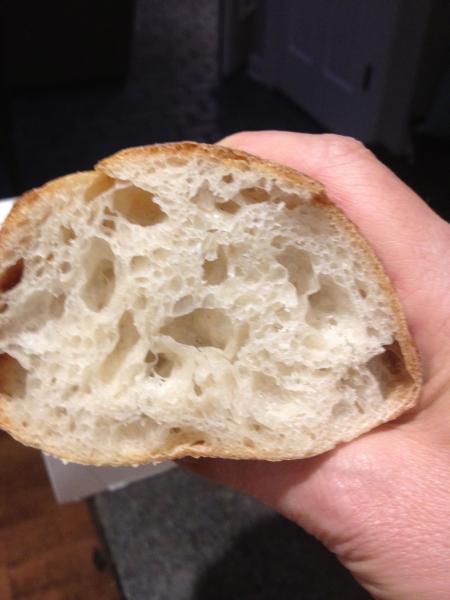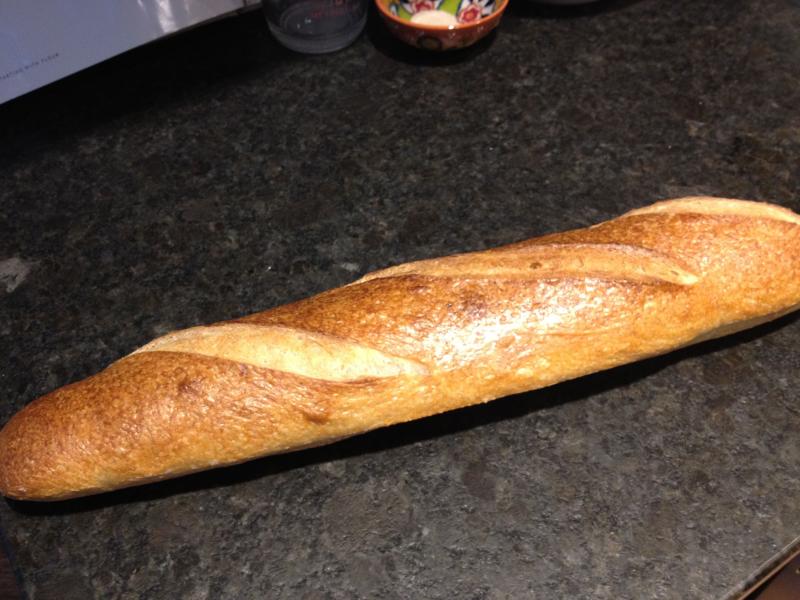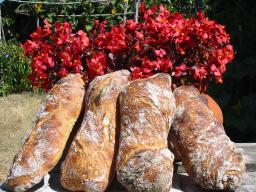A week ago, I bought my first rye and whole wheat flour, they were imported from Germany. I could not understand a word on the description, but I was determined to try my hand on these flour. Here I am trying my first rye and whole wheat bread. Honestly, I have no idea what it is suppose to look like or taste like, as I'm not a fan of rye bread usually, I'm a white loaf freak. Surprisingly, this recipe is easy, and the taste is really good. I still need to work on my shaping and proofing timing though.
It;s a wet dough to work with, I'm now aching all over from the kneading, 3 different types of kneading just to get dough ready. Wish I have a machine to help me with. I'm still waiting for my birthday present...

The taste is pretty good though, seems like the poolish had helped with this outcome. Is it suppose to look like that? Unfortunately, Barry's artisan did have any pictures of the dough he made, and I found many rye and whole wheat that are more dense. Am I getting this right?
Jenny
Recipe Here:
Jenny's Blog on Poolish Rye and Whole Wheat Bread










